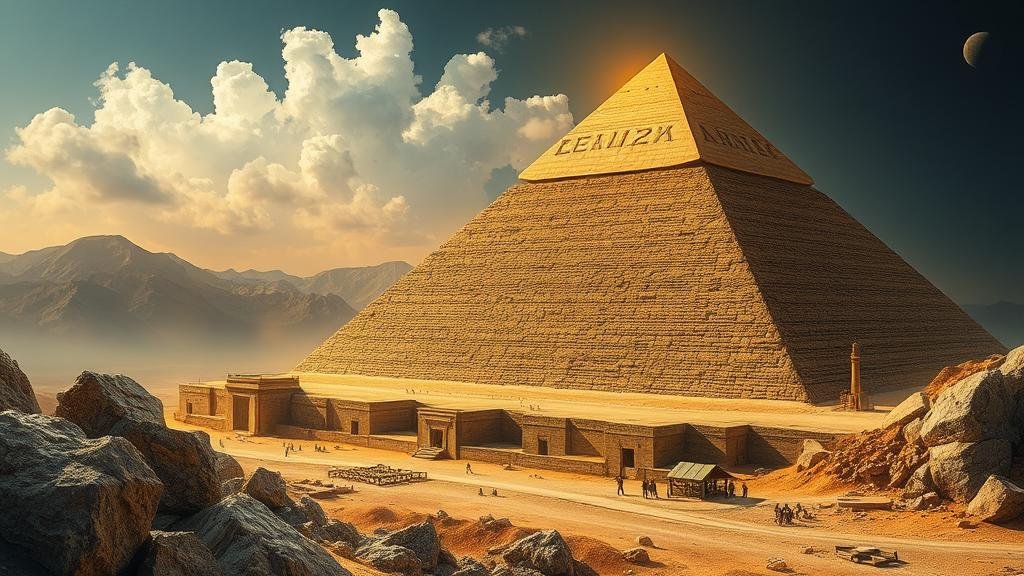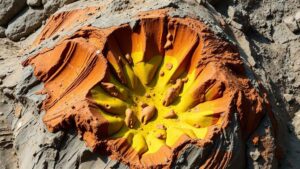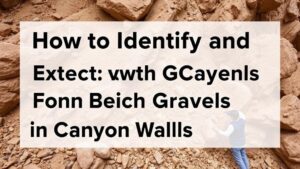How the Mines of the Pyramid Mountains Became a Source of Gold and Silver
How the Mines of the Pyramid Mountains Became a Source of Gold and Silver
The Pyramid Mountains, located in the western United States, have a rich geological history that has made them a significant source of precious metals such as gold and silver. The combination of geological formations, historical mining practices, and modern technological advancements has led to the extraction of these valuable resources. This article delves into the factors contributing to the prominence of the Pyramid Mountains in the mining industry.
Geological Foundations
The Pyramid Mountains are characterized by a complex geological structure, primarily consisting of metamorphic and igneous rocks. This unique formation is integral in understanding the mineral deposits found within. The presence of hydrothermal systems, which are crucial for mineralization, has been extensively documented.
The geological history of the Pyramid Mountains dates back millions of years, featuring significant tectonic activity that created the conditions necessary for mineral deposits. For example, the intrusion of molten rock into cooler surrounding rocks resulted in the formation of veins rich in gold and silver. e veins are often found in proximity to faults, where hydrothermal fluids can easily circulate and deposit minerals.
Historical Context
The mining of gold and silver in the Pyramid Mountains can be traced back to the mid-19th century, coinciding with the California Gold Rush. Prospectors were drawn to the region due to discoveries of precious metals in nearby areas. By the 1860s, several mining camps had formed, and small-scale mining operations began.
Key historical figures, such as John W. Mackay and James G. Fair, recognized the potential of the Pyramid Mountains. Their investments in local mining operations laid the groundwork for future endeavors. Historical records indicate that during the late 1800s, these mines yielded significant quantities of gold and silver, prompting further exploration and extraction efforts.
Modern Mining Techniques
As technology has advanced, so too have the methods used to extract precious metals from the Pyramid Mountains. Modern mining techniques, such as open-pit mining and underground mining, have significantly improved the efficiency and safety of extraction operations.
- Open-Pit Mining: This method involves removing large quantities of earth to expose ore deposits, allowing for the efficient extraction of gold and silver.
- Underground Mining: This technique, employed for deeper deposits, utilizes shafts and tunnels to access precious metal veins without disturbing the surface environment.
Also, innovations in metallurgical processes, such as heap leaching and flotation, have enhanced the ability to recover metals from lower-grade ores. For example, heap leaching involves stacking ore in large piles and applying a cyanide solution to dissolve gold, making it easier to recover even trace amounts of metal.
Environmental Considerations
While mining in the Pyramid Mountains has brought economic benefits, it has also raised environmental concerns. extraction process can lead to habitat disruption, water contamination, and soil erosion. But, the industry has made strides in adopting sustainable practices.
For example, many mining companies now implement reclamation projects that restore mined land to its original condition, promoting biodiversity. The use of environmentally-friendly extraction technology, such as bioleaching, which uses microorganisms to extract metals, is also becoming more common.
Economic Impact
The gold and silver mines in the Pyramid Mountains contribute significantly to the local economy. Also to direct job creation within the mining sector, ancillary industries such as transportation, equipment manufacturing, and support services benefit from mining activities.
According to the National Mining Association, the mining industry contributed approximately $163 billion to the U.S. economy in 2020, with precious metals accounting for a considerable portion of that figure. The revitalization of historic mining districts has also spurred tourism, as the region attracts visitors interested in the areas rich history and natural beauty.
Conclusion
The combination of geological factors, historical significance, modern mining techniques, and considerations for environmental sustainability has established the Pyramid Mountains as a vital source of gold and silver. As technology continues to evolve and environmental practices improve, the potential for future mining operations in this region remains promising.
For those interested in the mining industry, continued research and investment in sustainable practices will be essential. The legacy of the Pyramid Mountains serves as a testament to the relationship between natural resources and economic development, highlighting the need for responsible stewardship moving forward.



